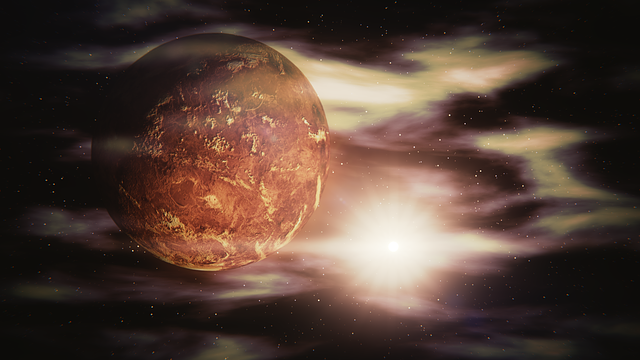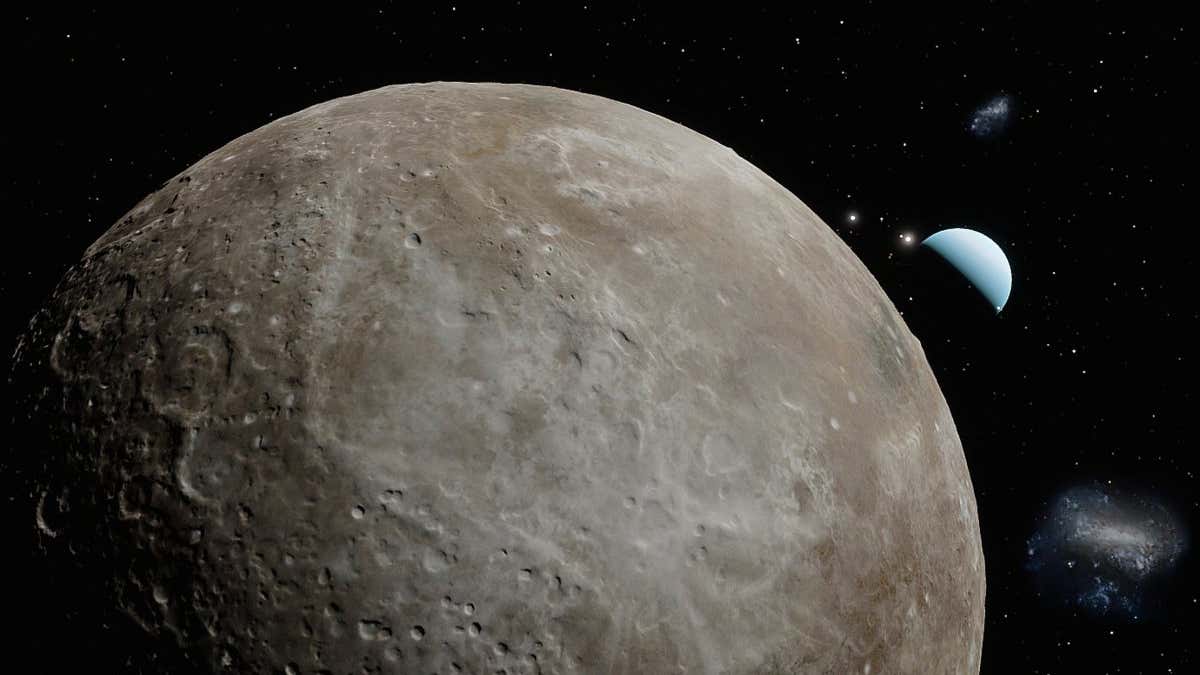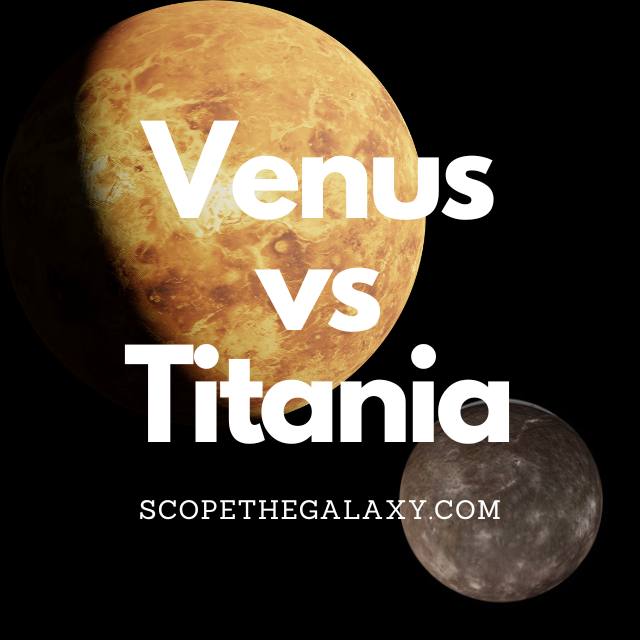*This post may contain affiliate links. This means we may make a commission if you purchase an item using one of our links*
The main differences between Venus and Titania are that Venus is a planet whilst Titania is a natural satellite, Venus is far bigger with a diameter of 12,104km whilst Titania has a diameter of 1576.8km, Venus is both the hottest and brightest celestial body in our solar system whilst Titania is neither and Titania orbits Uranus whilst Venus only orbits the Sun.
There are numerous other differences between the two so, continue reading if you want a more detailed look at each of these spherical bodies along with their similarities and differences below.
What Is The Planet Venus?
Table of Contents

Venus is the 2nd closest planet to the Sun and is often regarded as Earth’s sister planet. It’s very close to our Earth in size where its diameter is 12,104km. This is just over 600km less wide than our home planet.
Unlike all the planets further outside the Sun’s orbit, Venus and even Mercury have no moons orbiting it. The most probable reason for this is due to its closer proximity to it, which means that smaller objects orbit the Sun as opposed to Venus.
Venus is also the hottest planet in our solar system where its surface temperature is 475 degrees Celsius. This is due to a number of factors, like the thicker atmosphere, close proximity to Sun, the reasons for which have been explained in more detail here.
It’s core is hot too, similar to that of the ice giants and Earth, where it stands at 5,200 degrees Celsius.
As a result of this thicker atmosphere, Venus is also able to reflect a lot more of the light the Sun projects at it, making it both the hottest and brightness planet in our solar system. This is why for the longest time, and even till this day Venus is often referred to as the morning or evening star.
The thicker atmosphere is mostly compromised of carbon dioxide, and thick clouds of sulfuric acid. This does result sulfuric acid rain on the planets surface, which of course is very corrosive.
Being so close to the Sun also mean its orbital cycle is much shorter. It takes Venus 225 days to complete a full cycle, on the contrary a single day is actually longer than this where it takes around 243 days for a full rotation around its axis.
This is partially down to its distance from the Sun and the thick atmosphere surrounding this terrestrial planet. The axial tilt on Venus is also different from the other planets in our solar system where it is practically straight at 3 degrees.
All in all this is certainly one of the most interesting planets in our solar system and in many peoples eyes, could very well have supported life in the past based on how close its shape and size is to that of Earth.
What Is The Moon Titania?

Titania is the biggest of Uranus’s moons, with a circumference of 4,956km and a diameter of 1576.8km.
The high density of this moon suggests that it most likely formed from a collection of dust and debris leftover from the formation of Uranus or from the debris created in the collision that reportedly tilted Uranus onto its side. As a result Titania has a mass of 3.4 × 10^21 kg.
First discovered on 11th January 1787 (the same day as the discovery of Oberon, the second biggest moon of Uranus) by British astronomer William Herschel, the name “Titania” comes from the Shakespeare play, A Midsummer Night’s Dream. (Most of Uranus’ moons are named after Shakespeare’s characters.)
Having observed Titania for many years, scientists theorize that its composition is likely to be equal parts ice and rock, the latter of which may contain carbonaceous materials and organic compounds.
Research suggests that the moon most likely has a rocky core (accounting for 66% of the moon’s radius) and an icy mantle. If the mantle contains ammonia, it will act as antifreeze and make it possible for liquid water to exist. In this instance, the moon could possess a layer of liquid ocean around 50km thick.
Titania tilts slightly towards the equator of Uranus and is tidally locked to its planet. This means a Titania day is 8 days and 17 hours which would be the same for its orbital cycle. Titania has an average temperature of -203 degrees Celsius.
The planet Uranus is also tilted, with the moons orbiting on the equatorial plane, giving it extreme seasons. On Titania, the north and south poles experience 42 years of complete sunshine followed by 42 years of total darkness.
Scientists have observed the presence of large amounts of carbon dioxide, suggesting this may be the primary component of this moon’s atmosphere. Thanks to the tilted orbit, and a concentration of solar radiation from the poles, Titania probably maintains a carbon dioxide cycle, similar to the hydrogen cycle on Earth.
Similarities Between Venus And Titania
Titania and Venus do have their odd few similarities, which in this case includes the below:
- Both have a hotter central core.
- Both have an atmosphere and a rocky surface.
- Both are a spherical shape.
- Both are part of the same solar system.
- Both have no rings surrounding them.
- Neither have plate tectonics.
- Neither have other moons orbiting them.
- Neither bodies have a magnetic field.
Differences Between Venus And Titania
As for the differences between the two, they include the below.
- Titania orbits Uranus whilst Venus only orbits the Sun.
- Venus is a terrestrial planet whilst Titania is a terrestrial based natural satellite.
- Venus has a diameter of 12,104km whilst Titania’s diameter is 1,576.8km.
- Titania has a very thin exosphere composed mostly of carbon dioxide whilst Venus has the thickest atmosphere amongst the terrestrial planets, where it is 90 times the thickness of Earth’s consisting of 95.32% carbon dioxide, 2.7% nitrogen, 1.6% argon and 0.13% oxygen.
- A day on Titania takes 8 days 17 hours whilst a Venus day takes 243 days.
- It takes Titania 8 days 17 hours to orbit Uranus and around the Sun in 84 years whilst Venus orbits the Sun in 225 days.
- Venus has an axial tilt of 3 degrees whilst Titania’s axial tilt is closer to 0.
- Titania’s average temperature is around -203 degrees Celsius whilst Venus is the hottest planet in our solar system with an average temperature of 475 degrees Celsius.
- Venus has a density of 5.24 g/cm³ whilst Titania’s density is 1.71 g/cm³.
- Venus’ mass is 4.867 × 10^24 kg whilst Titania’s mass is 3.4 × 10^21 kg.
- Titania’s gravitational strength is 0.367 m/s² whilst Venus’ is 8.87 m/s².
- Titania is tidally locked to Uranus whilst Venus is is not tidally locked to any entity.
- Titania may have water within its surface whilst Venus does not.
- Venus is the brightest celestial body in our solar system.
Summary
Despite the fact both are terrestrial beings, have no other bodies orbiting them and are part of the same solar system, Venus and Titania are very different from one another.
Whether it be in regards to their sizes, mass, density, surface temperatures, having a magnetosphere and more, Venus and Titania are ultimately designed to function and operate distinctly within our local solar system as has been discussed throughout this article.

